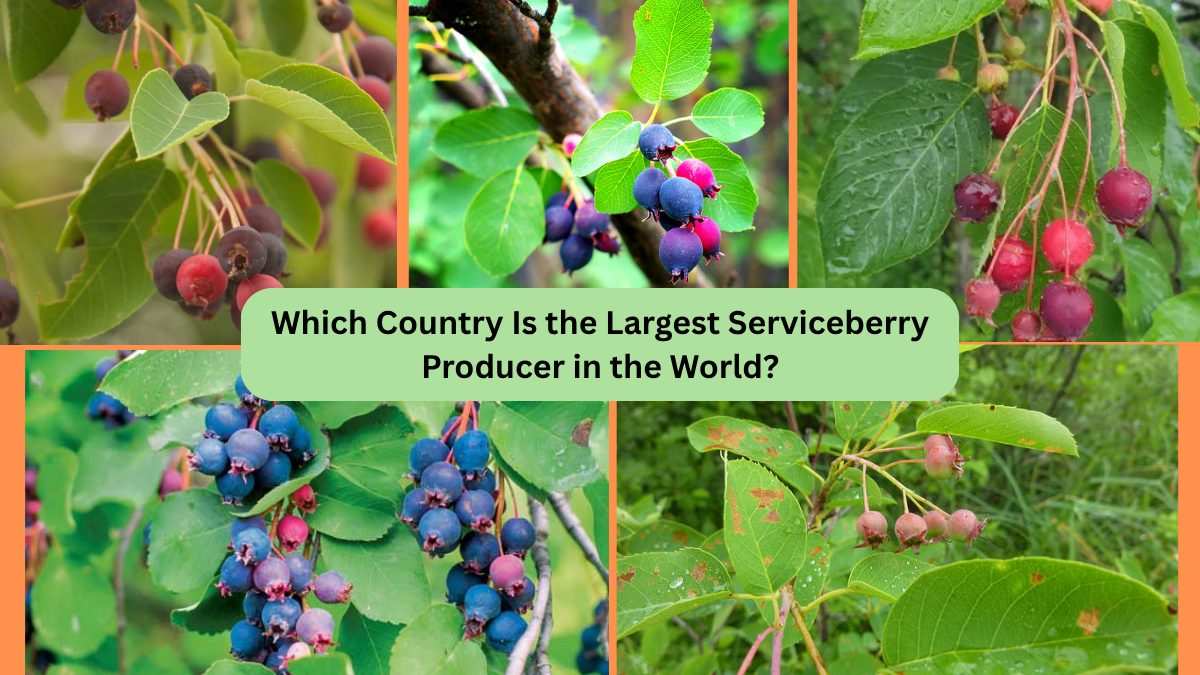The world of berries is wonderfully diverse, filled with fruits of every size, color, and flavor. One lesser-known but highly valuable fruit in this category is the Serviceberry — a hardy, nutrient-rich fruit native to temperate regions of the Northern Hemisphere. Revered for its sweet, blueberry-like taste and impressive health benefits, the Serviceberry is steadily gaining recognition globally.
But when it comes to commercial and native production, one might wonder — which country leads the world in producing Serviceberries? In this article, we’ll uncover the answer while exploring the history, varieties, cultivation, uses, and health benefits of this remarkable fruit.
What Are Serviceberries?
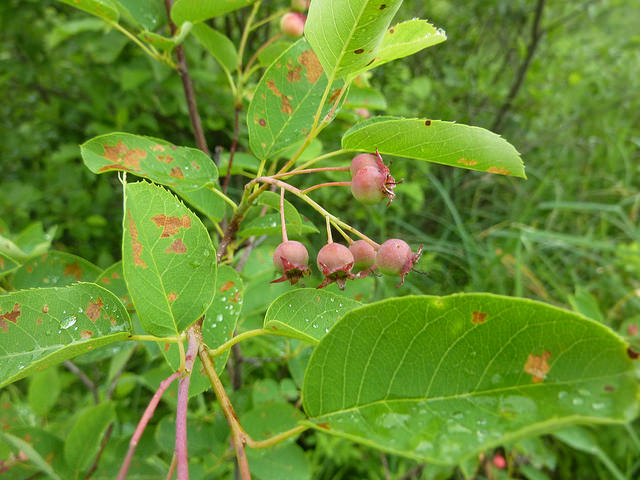
Serviceberries, also known as Juneberries, Saskatoon berries, Shadbush berries, or Amelanchier, are small, round, and typically purple or blue berries produced by various species within the Amelanchier genus of the Rosaceae family. Native to North America, these berries grow on deciduous shrubs and small trees in temperate climates.
Quick Facts:
- Scientific Genus: Amelanchier
- Other Names: Juneberry, Saskatoon berry, Shadbush berry, Sugarplum
- Fruit Appearance: Small, purplish-blue berries resembling blueberries
- Taste Profile: Sweet with a hint of almond-like nuttiness
- Native Range: North America, parts of Europe, and Asia
Which Country Is the Largest Serviceberry Producer in the World?
Canada holds the title of the largest Serviceberry producer in the world.
Specifically, the Canadian Prairie Provinces — Alberta, Saskatchewan, and Manitoba — account for the bulk of global production. In these regions, Serviceberries, commonly known as Saskatoon berries, are a vital part of both indigenous cultural heritage and modern agricultural industries.
Why Canada Leads in Serviceberry Production

Canada’s dominance in Serviceberry production is a result of several critical factors:
Ideal Climate and Soil Conditions
The Canadian Prairies possess the cold winters and warm summers essential for Serviceberry cultivation. These hardy shrubs require a cold dormancy period to produce a healthy crop and thrive in the well-drained, sandy loam soils found in this region.
Indigenous and Historical Importance
Serviceberries have long been part of the diet and medicine of Indigenous peoples in Canada. Traditionally, they were mixed with dried meat and fat to make pemmican, an essential high-energy food. This historical value translated into continued cultivation and consumption.
Commercial Orchards and Export Growth
In recent decades, commercial orchards specializing in Saskatoon berries have been established across Saskatchewan, Alberta, and Manitoba. These berries are now exported to markets in Europe, the U.S., and Asia, especially as demand for superfoods has surged.
Government and Agricultural Research Support
Canada invests in agricultural innovation and crop research, developing new Serviceberry cultivars with improved yields, pest resistance, and flavor profiles. Institutions like the University of Saskatchewan’s Fruit Program have been instrumental in advancing the industry.
Serviceberry Varieties Grown in Canada
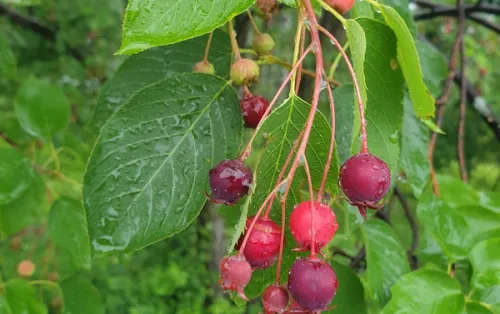
Several Serviceberry species and cultivars are cultivated in Canada for both wild harvesting and commercial production. The most significant include:
- Amelanchier alnifolia (Saskatoon berry): The most commercially important species.
- Smoky: A widely grown cultivar known for its large, sweet berries.
- Northline: Renowned for its consistent yields and deep purple fruit.
- Honeywood: Valued for its rich flavor and late ripening.
- Thiessen: Produces larger berries, preferred for commercial harvesting.
Global Production Overview
While Canada dominates global Serviceberry production, other countries also produce them, mainly for local markets.
| Country | Estimated Share of Global Production |
|---|---|
| Canada | 65–70% |
| United States | 20–25% |
| Poland | 5% |
| Russia | 3% |
| United Kingdom | Small local cultivation |
Uses of Serviceberries
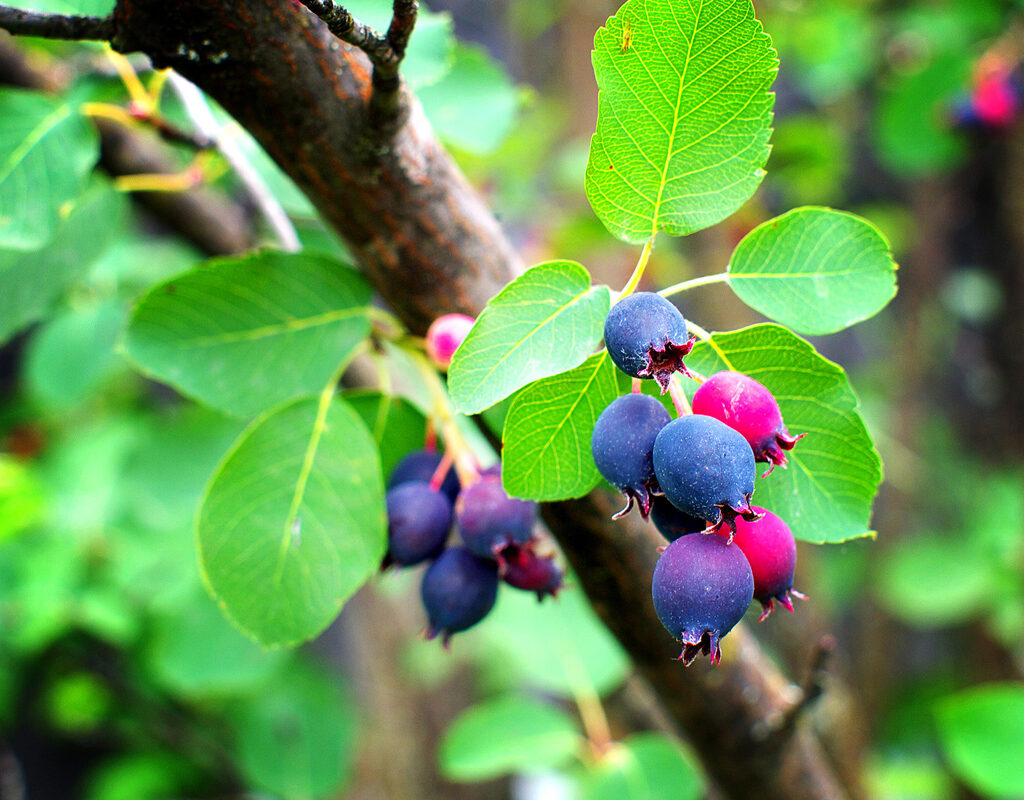
Culinary Uses
Serviceberries are prized for their sweet flavor and versatility. Common culinary applications include:
- Jams and jellies
- Pies and tarts
- Smoothies
- Desserts and pastries
- Fresh eating
- Wine, liqueurs, and ciders
Traditional Medicine
Historically, Indigenous communities in Canada and the U.S. used Serviceberries to treat various ailments:
- Digestive issues
- Colds and fevers
- Inflammation
- Wound healing
Modern Health Products
Serviceberries are now marketed in:
- Dried fruit snacks
- Freeze-dried powders
- Superfood supplements
- Nutraceuticals
Health Benefits of Serviceberries
Serviceberries are not only delicious but also loaded with essential nutrients and health-promoting compounds.
Nutritional Profile (per 100g fresh berries)
- Calories: 85 kcal
- Fiber: 5.9 g
- Vitamin C: 11 mg
- Manganese: 0.5 mg
- Iron: 1.2 mg
- Antioxidants: Rich in anthocyanins and flavonoids
Health Benefits
- Boosts immune function
- Supports heart health
- Rich in antioxidants, fighting free radical damage
- Promotes healthy digestion
- May help regulate blood sugar
- Anti-inflammatory effects
Serviceberry Production in Other Countries
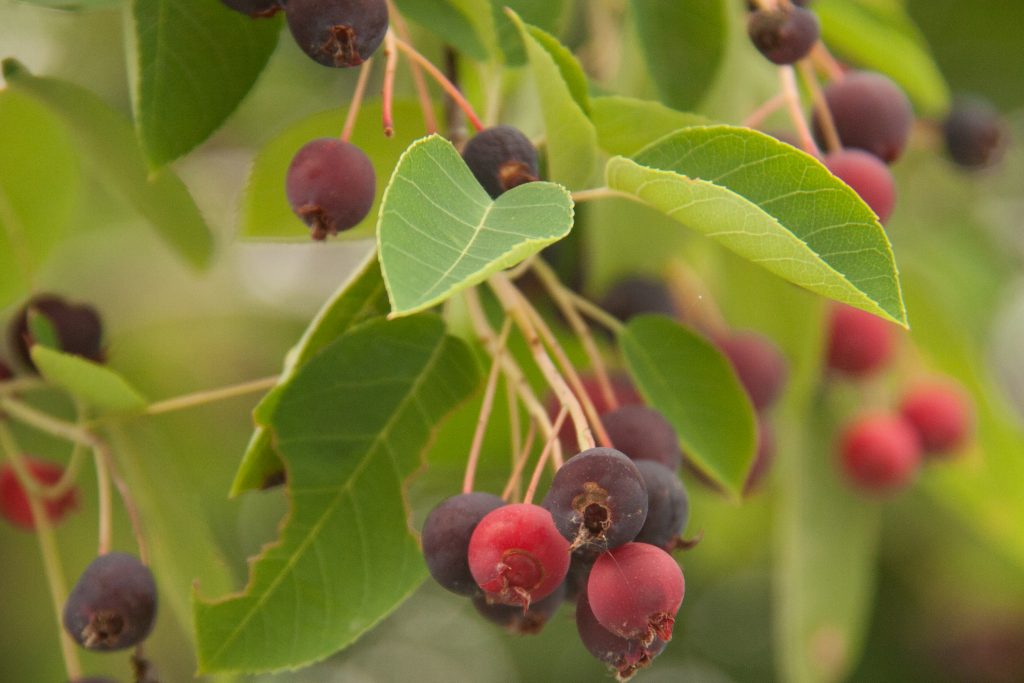
United States
The U.S. ranks as the second-largest producer, particularly in the northern states like Montana, Minnesota, and Michigan. Serviceberries, often called Juneberries in the U.S., are gaining popularity in farmers’ markets and organic food stores.
Poland
Poland cultivates Serviceberries, known as śnieguliczka, primarily for niche culinary products and traditional preserves.
Russia
Serviceberries are grown in cooler regions of Russia, where they’re valued in traditional medicine and homemade liqueurs.
United Kingdom
Serviceberries are grown in gardens and orchards across the UK, primarily as ornamental plants with edible fruit for small-batch jams and desserts.
Challenges Facing Serviceberry Production
Like any agricultural sector, Serviceberry production faces a number of obstacles:
- Pest and disease control, including aphids, sawflies, and fungal infections.
- Climate challenges, as unexpected frosts or droughts can damage crops.
- Limited international awareness compared to better-known berries like blueberries or cranberries.
- Short harvesting window, typically from late June to early July (hence the name Juneberry).
Future of the Global Serviceberry Market
As global interest in superfoods and antioxidant-rich fruits continues to grow, Serviceberries are poised to attract broader consumer attention. Their unique flavor, nutritional benefits, and versatility make them ideal for health-conscious consumers and food innovators.
Canadian producers, in particular, are focusing on:
- Value-added products like wines, dried snacks, and supplements
- Export opportunities in Europe and Asia
- Organic and sustainable farming practices
- Cultivar development for improved shelf life and yield
Conclusion
In conclusion, Canada is the undisputed leader in global Serviceberry production, accounting for nearly 70% of the total output. The Canadian Prairies provide perfect conditions for cultivating these hardy, nutrient-dense berries, which have long-standing cultural, culinary, and medicinal value.
As demand for natural, health-promoting foods continues to rise, the future looks bright for Serviceberries — with Canada proudly maintaining its position at the top of the industry.
